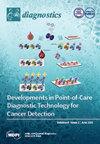摘要
黄斑部毛细血管扩张症(MacTel)是一种罕见的视网膜血管疾病,其中3a型MacTel是一种独特的类型,其特征是视网膜缺血,并伴有MacTel的经典表现,如眼底毛细血管扩张、直角静脉和深部毛细血管丛受累,但无中枢神经系统表现。本病例显示了一种新的 X 型病变模式和缺血性特征,扩大了 MacTel 的已知影像学范围。一名 53 岁的男性患者患有糖尿病,并有阿立哌唑使用史,出现持续性视力模糊、黑帘感和右眼偏视。右眼视力为 0.8,左眼视力为 1.0。医生采用多模态成像方法,包括眼底照相、眼底自动荧光(FAF)、荧光素血管造影(FFA)、光学相干断层扫描(OCT)和光学相干断层血管造影(OCTA),来评估结构和血管异常。眼底检查发现一个 X 型色素减退病变,中央有色素沉着。FAF 显示低自荧光,表明 RPE 长期缺失,但未观察到眼窝自荧光缺失。FFA显示进行性高荧光,伴有眼窝周围血管瘤和毛细血管扩张,眼窝无血管区(FAZ)略有扩大,提示缺血受累。OCT 显示视网膜内囊肿、椭圆形区和外缘膜破坏、色素上皮脱落以及脉络膜反向散射增加。OCTA 证实存在直角静脉、动脉瘤状毛细血管扩张和局部缺血,主要影响深部毛细血管丛。该病例突显了一种罕见的 3a 型 MacTel 变异,其病变呈独特的 X 形。眼底毛细血管扩张、血管闭塞、直角静脉和深部毛细血管丛改变的存在支持了诊断。多模态成像在确定该疾病的特征以及将其与其他黄斑疾病区分开来方面发挥了关键作用,有助于扩大对 MacTel 临床和成像谱的理解。Macular Telangiectasia (MacTel) is a rare retinal vascular disorder, with Type 3a MacTel being a distinct form characterized by retinal ischemia with the classical findings of MacTel, such as juxtafoveal telangiectasis, right-angled venules, and deep capillary plexus involvement without central nervous system findings. This case presents a novel X-shaped lesion pattern and ischemic features, expanding the known imaging spectrum of MacTel. A 53-year-old male with diabetes and a history of aripiprazole use presented with persistent blurred vision, a black curtain sensation, and metamorphopsia in the right eye. Visual acuity was 0.8 in the right eye and 1.0 in the left. A multimodal imaging approach, including fundus photography, fundus autofluorescence (FAF), fluorescein angiography (FFA), optical coherence tomography (OCT), and optical coherence tomography angiography (OCTA), was used to evaluate structural and vascular abnormalities. Fundus examination revealed an X-shaped hypopigmented lesion with central pigmentation. FAF showed hypoautofluorescence, indicating chronic RPE loss, and no loss of foveal autofluorescence was observed. FFA demonstrated progressive hyperfluorescence with perifoveal aneurysmal and telangiectatic vessels, along with a slightly enlarged foveal avascular zone (FAZ), suggesting ischemic involvement. OCT revealed intraretinal cysts, a disruption of the ellipsoid zone and external limiting membrane, pigment epithelial detachment, and increased choroidal backscattering. OCTA confirmed right-angled venules, aneurysmal telangiectatic vessels, and localized ischemia predominantly affecting the deep capillary plexus. This case highlights a rare variant of Type 3a MacTel with a unique X-shaped lesion. The presence of juxtafoveal telangiectasis, vascular occlusion, right-angled venules, and deep capillary plexus changes supports the diagnosis. Multimodal imaging played a critical role in characterizing the disease and differentiating it from other macular disorders, contributing to an expanded understanding of the clinical and imaging spectrum of MacTel.

 求助内容:
求助内容: 应助结果提醒方式:
应助结果提醒方式:


